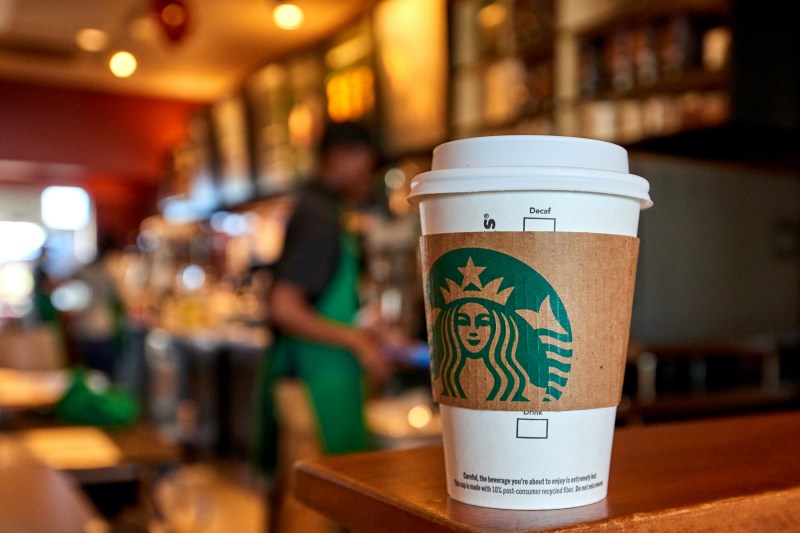Created in the 1990s by a customer in Vancouver’s Buckwheat Cafe, the London Fog drink remains a popular drink for tea lovers today. Mary Loria, a customer, invented the drink while searching for a coffee alternative to enjoy when visiting the cafe. After she fell upon the delicious discovery of the London Fog drink, this drink began to spread across other cafes worldwide.
Combining Earl Grey tea with a hint of creaminess, the London Fog drink hits the spot as a sweet and simple drink that’s perfect for any time of the day — morning or night. Here’s what you need to know about the London Fog drink and how to make it.
What is a London Fog drink?

A London Fog drink is a latte-style drink that contains tea instead of coffee. Served hot or iced, it elevates a plain cup of Earl Grey tea with a creamy texture. It’s made with Earl Grey tea, sweetener (usually vanilla), and steamed or frothed milk. This drink has a sweet, slightly floral, and creamy texture and can be amplified with a few variations. One popular variation, the Lavender London Fog, adds an extra floral taste with the addition of lavender.
There’s some controversy about how the London Fog drink earned its name. Many London Fog lovers think the drink is named for the cloudy look that forms when warm milk is added to Earl Grey tea. London is known for its foggy skies, so this theory makes sense. Others think the name alludes to the foggy skies common in London in the early 19th century. While we may not know exactly where the London Fog drink got its official name, we know it remains a popular choice when you need a warm and sweet drink.
How to make a London Fog drink

While there are many approaches you can take to whipping up a London Fog drink, almost all are fairly simple. While you don’t need any tools to make this drink, having a milk frother, electric kettle, or milk steamer can speed up the process.
Ingredients
- 1 bag of any Earl Grey tea
- 1/2 cup of hot water
- 1/2 cup of unsweetened vanilla almond milk or regular 2% milk
- 1/4 teaspoon of vanilla extract
- 1-2 teaspoons of raw honey, maple syrup, or other sweetener of choice
Note: These basic ingredients make up the classic London Fog drink, but there are endless variations and customizations you can make. Whether you prefer almond milk instead of regular milk or sugar-free vanilla syrup instead of extract, you choose how to make your drink suited to your taste buds. As long as you’ve got the basics of Earl Grey tea, vanilla flavoring, and some variety of milk — you’ll craft a pretty delicious London Fog drink.
Method
- Steep a bag of Earl Grey tea into 1/2 cup of hot water for about 3 to 5 minutes (longer for stronger tea preference)
- Mix your milk and vanilla extract. Steam or use a milk frother to create a foamy texture. You can heat the milk on the stovetop if you don’t have a milk frother.
- Stir in your sweetener to the tea and mix well — top with frothed warmed milk.
- Enjoy hot!
This method creates a warm London Fog drink. If you wish to enjoy it iced, prepare the tea and put it in the fridge overnight. When you’re ready to enjoy it, pour your cold tea and milk over ice.
Ordering a London Fog latte

Don’t want to make your own London Fog Latte yourself? You can also grab one on the go, as this drink is pretty standard on coffee and tea cafe menus. The beloved Starbucks Iced London Fog Latte features a bright, citrusy spark of bergamot blended with subtle hints of lavender. Starbucks’ Iced London Fog Latte is prepared with vanilla syrup, milk, and ice to create a delicious reinvention of a classic Earl Grey tea. Of course, you can order this in a classic hot variety, too.
There are also ready-to-drink London Fog drinks for when you’re short on time. For example, RISE Brewing Co.’s London Fog Earl Grey Tea Latte with Oat Milk is a fantastic dairy-free option. Whether you’re looking for light caffeination to start your day or an afternoon pick-me-up, this delicious option is ready to enjoy right out of the can. The smooth infusion of nitrogen, similar to Nitro Cold Brew coffee, makes this option a unique way to enjoy a London Fog drink while traveling. With only 25 mg of caffeine per 7-ounce serving, it’s also a low-caffeine alternative to traditional lattes.




